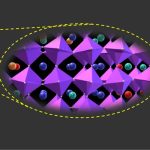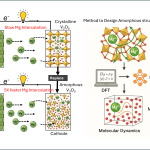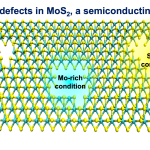
2D materials are atomically thin, single-layered films arranged in a crystal structure, with potential applications in next-generation electronics. Ferromagnetism in such materials – the mechanism by which they act as magnets – was considered implausible until recently.
As the temperature increases, the magnetic order in these materials gets disturbed. The temperature at which they lose their ferromagnetic properties is known as the Curie point. Curie point is therefore a critical property of these materials for practical applications, but determining it involves very complex calculations.
A research team from the Department of Electronic Systems Engineering, IISc, has now developed an open source computer code to estimate Curie temperatures from the crystal structures of materials. They were able to identify 26 high-temperature 2D ferromagnetic materials from large open source databases, which could be ideal for use in high-temperature devices. The team has also developed a machine learning model to predict the Curie temperature of such materials.






